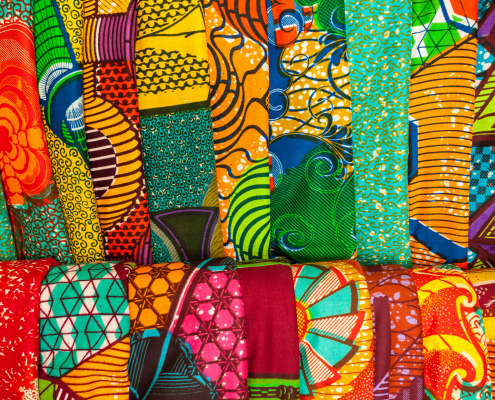AUTHENTICITY OF AFRICAN CULTURE AND ITS INFLUENCE ON CULTURE APPROPRIATION by Timi Aluko, Nigeria
Lying on my bed with my eyes glued to my phone screen, I was scrolling through the pages of my Instagram feed. From slaying mamas to small businesses to black Americans screaming cultural appropriation. A particular post caught my eye, cultural appropriation of the Ankara fabric. I read the details of the post and I laughed. The author was so confident about a misunderstood history. Not long enough I stopped laughing and remembered I had the same orientation a few weeks back. Well, until I met a young lady who had studied African history in college, I had been so ignorantly angry at Europeans and Asians who appropriated my “culture”. I had argued ignorantly on the history of the Ankara fabric while she stared and listened to me with an unreadable expression.

Minutes into my rant, she interrupted me politely asking me about the Eurasian history. I was quiet as I had never read anything about the Eurasian. Although, she had treated me as an educated illiterate that day I developed the urge to educate myself on several topics concerning my culture.
During my research, I stumbled upon a fact that I would have doubted if it was used in an argument. Ankara fabric was created by the Dutch in 1894. The fabric was used by Europeans and Dutch but later introduced to nations colonized by the Dutch. African fabric is known by many names such as Dutch wax print, Real English wax, Veritable Java Print and many more. This fabric has become the epitome of our ‘Africanness’ but it has a diverse and complex history. The issue of the popularity of the fabric in Africa is debated. What is certain is that the fabric started off as an imitation of the Indonesian batik locally produced in Java. Through colonization by the Europeans and Dutch, the Fabric spread through several continents. After being colonized by the Dutch, the Javanese Batik was introduced to Holland and other parts of Europe but it did not gain popularity. This triggered textile industrialization as the Van Vlissingers established a company in 1894 which mass produced these fabrics in Europe. They are now known as today’s Vlisco brand.
The fabric was said to have been dropped at the shores of Africa by Dutch freighters on their way to Indonesia. The fabric was wildly rejected by the Europeans but accepted by the Ghanaians. This lead to the use of the fabric originally called the Dutch Wax which was later ”Africanised” and tagged ”Ankara”. With a new target base in Africa, Dutch textile industries made some changes to the motif designs to better suit the African market. Although this took more time and effort, we can see that it was worth it. The market grew even bigger. From the mid-20th century, motifs of local leaders were manufactured so that people could buy in order to celebrate their leaders (so if you think your church material started today, think again). This continued as in the 1950s African head of States and Political leaders were used as design motifs. Does this integration into African society make them authentically African?
Until the 1960s, most wax sold in Africa were made in Europe. After colonization, things changed. Ghana had several high print wax manufacturing companies, including Woodin- a subsidiary of Holland’s Vlisco; and ATL a subsidiary of Manchester-based ABC textiles. Africa is yet to own a textile manufacturing company with no links to our European counterparts.
The question of authenticity is yet to be answered. Can Ankara be called African? Well, they cannot be compared to our Adire or Aso-Oke. One thing is for sure. If we don’t promote our own fabrics, they will ultimately fizzle out of existence. This doesn’t mean we are expected to kick Dutch wax out of our continent, we have to just put our locally made fabric on the same playing field.
If this history is to be considered, the hypocrisy surrounding the fight against cultural appropriation should be checked and managed. We have adopted the prints into our culture, but the fabric did not originate from Africa. Most Africans and African-Americans scream murder at the slight use of African culture when the major part of our culture was borrowed from the colonizers. This shows the victim mentality Africans and African-Americans have held onto for years. We are uneducated and sheltered that we forget to ask questions rather than be angry only because others are angry. We let our tainted history dictate our future while displaying our ignorance in our quest for justice and compensation for our history of slavery.
Before you scream culture appropriation, know your history and heritage. We can avoid conflict, hate, and war (verbal or physical). History needs to be documented and African history is quite vague. We have the responsibility to write our history and pass it on to the next generation.





Leave a Comment
Want to join the discussion? Feel free to contribute!